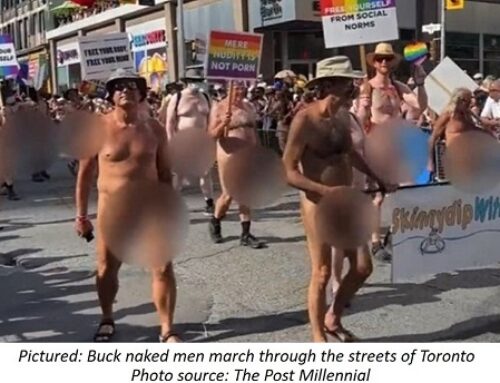Some people, usually non-homosexuals who believe they must reproach their fellow men for opposing homosexuality often speak of “loving relationships” among homosexuals. In the book Homosexualities published through the Kinsey Institute, sexologists Bell and Weinberg provide documentation for the following:
Promiscuity and multiple partners among homosexuals:
- Less than 25 different partners: less than nine percent
- Between 100 and 500 different partners: 32 percent
- Between 500 and 1000 different partners: 15 percent
- Over 1000 different partners: 28 percent
- Life-long monogamous relationships: less than one percent.
The book reveals that, contrary to the idea of “loving relationships” between homosexuals, 70 percent of homosexuals confined their sex relationships to impersonal one-night affairs and also 70 percent indicated no desire to associate socially with their transient sex partners. (A. I. Bell and Martin Weinberg, Homosexualities, New York, Simon and Schuster, 1978, p. 308.)
In The Joy of Gay Sex, the authors declare that “gays today represent the tendency toward hedonism in one of its most extreme forms. Sex is one of life’s chief pleasures…many homosexuals seldom or never settle down with lovers; and endless rounds of one night stands or short affairs provide gay men with constant novelty and excitement…many homosexual men feel bad about their promiscuity.” (Silverstein and White, The Joy of Gay Sex, New York, Simon and Schuster, 1977, p. 13.)
In other words, the homosexual lifestyle is sordid and self-destructive.
Genetics
Another argument frequently heard is that homosexuality is not a matter of choice any more than being “black” or “a Jew.” This reasoning was recently used by newspaper editorial writers and columnists and Attorney-General Ian Scott in denouncing opposition to Section 18 of Ontario’s Bill 7 legalizing “sexual orientation.”
This argument has also been employed by certain clergymen, to argue that homosexual orientation should not be considered wrong, but rather should be looked upon as a “gift from God.” But the very researchers whom they consider unassailable authorities, such as famous sexologists Masters and Johnson, who 30 years ago may have contributed to these notions, now note that “the genetic theory of homosexuality has been generally discredited today.” (Masters and Johnson, Human Sexuality, Boston, Little, Brown and Co., 1982, p. 321.)
Their research also disclosed a 50 percent therapeutic conversion rate of homosexuals returning to a normal lifestyle.
Two additional myths spread by the “gay rights” movement and often accepted by others are 1) homosexuals don’t recruit; 2) they are no more prone to child sexual abuse than heterosexuals. American national studies document that adult homosexual assaults on boys represent 50 percent of the entire total of child sexual assault. In other words they are 24 times more likely to molest children than heterosexuals, if their numbers are calculated at four percent of the population which is the figure according to the Kinsey report. (Even at the wildly exaggerated claim of “gays” that they form ten percent of the population, they are still nine times more likely to molest children) (“Rapes of boys are increasing, Studies Show,” Seattle Times, June 18, 1986, p. A12.)
According to Dr. Nicholas Groth, director of the sex offender programme at Connecticut Correctional Institution, 80 percent of the pedophiles he treats were themselves abused as youngsters. (“Furor over pedophilia,” Time, January 17, 1983, p. 47.)
In Seattle (Wash.), over 200 boy prostitutes cater to the appetites of the homosexual population. Eighty-seven percent of these boys were sexually molested before they hit the streets – at an average age of 9.7 years old. The deputy director of the National Centre for Missing and Exploited children in the USA, John Pattison, was shocked by what he saw on the streets of Seattle. He stated, “For child exploitation to be visible as it is has got to be officially sanctioned. I’ve never seen it more blatant.” (Expert Says City Ignores Juvenile Prostitution,” Seattle Times, June 18, 1986, p. A12.) (From an article in the Wanderer, December 4, 1986 by Dr. Gary Bullert, Dept. of Political Science, Seattle University.)




